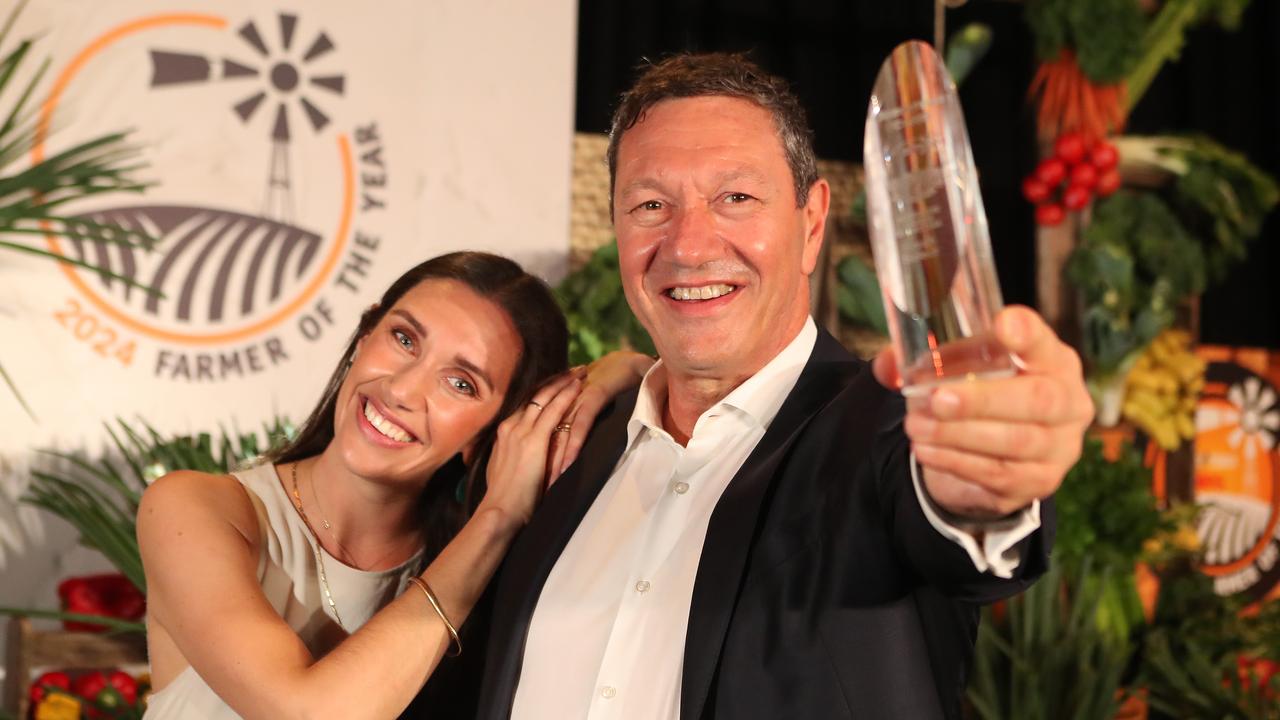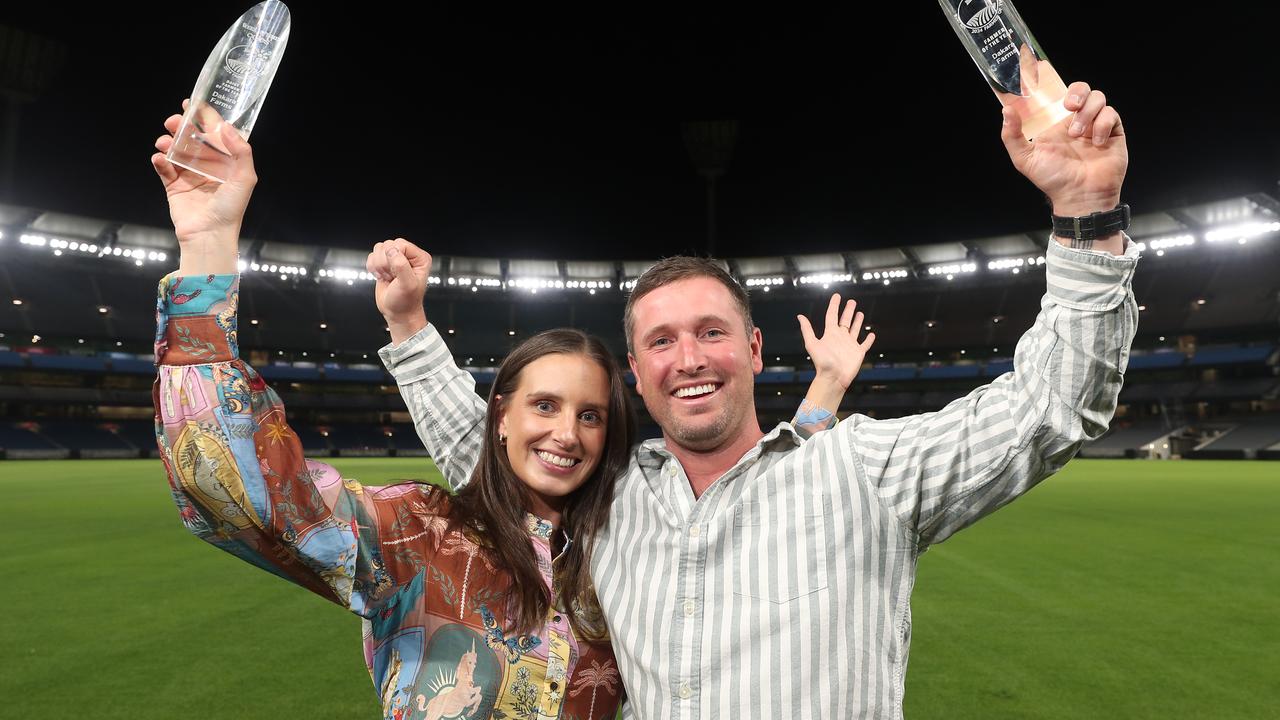Merino to the max
THE Wallises of Pinaroo are a rare breed of sheep diehards.

THE Wallises of Pinaroo are a rare breed of sheep diehards.
Their neighbours may have switched to continuous cropping and spuds, but Peter and Marianne Wallis have stuck with sheep.
With a focus on skin, wool quality and dual-purpose traits, the Wallises have reinvented their Glenlea Park Merino stud at Pinnaroo in the South Australian Mallee.
And they are dispelling the myth that big, dual-purpose South Australian Merinos cannot do well in wet climates such as Tasmania and New Zealand.
Peter's commitment to success with quality wool and easy-care Merinos makes him a match for any driven farmer of his generation.
The 39-year-old is making waves on the Merino scene.
This year Glenlea Park sold a ram for $51,000 at classer and consultant Bill Walker's annual invite-only Classings Classic multi-vendor sale at Murray Bridge.
Peter described the sale, to Les Hamence, of Pimbena Poll Merino stud at Wirrulla, as a "massive" achievement.
"I had the shakes and Marianne was in tears," Peter said. "It is about recognition, that the industry thinks our ram is at the top end, which gives a lot of satisfaction."
The stud has had a cracking run. This year's on-property sale cleared 99 rams from a 102-head offering to a top of $6200 and $1820 average. Another Glenlea Park ram sold at this year's Royal Adelaide multi-vendor sale for $18,000 and 10 rams at Hamilton's Sheepvention sold to a $10,000 top and averaged $2675.
But the stud has not always been at the forefront of modern sheep breeding.
The Wallises' Pinnaroo farm was bought by Peter's grandfather in the early 1900s.
His father, Glen, started the Merino stud in 1964 and then with wife Judy bought out a neighbouring farm in 1974.
"Dad and I then bought another neighbouring farm in 1994," Peter said, taking the holding to 1100ha.
"It was always my intention to come home on the farm, even though I was told it would be a waste of my abilities by a teacher in Adelaide.
"Then, farming was thought of by some people as what you did if you couldn't get into a course you wanted.
"That has changed now. It is pretty tough to be a farmer."
Only a few of Peter's age group returned to farm, he said.
"This area has become predominantly a continuous cropping area,'' he said.
"We need more young people to run sheep, and for contract labour.''
The farm was a mixed enterprise, comprising the stud, cropping and a commercial flock.
But the stud has grown in prominence and the Wallis family last month dispersed their commercial flock.
Glenlea Park now runs 800 stud ewes.
"It is about quality. Some breeders say it is all a numbers game, if you have enough ewes you'll eventually breed a good ram,'' Peter said.
"I'm so against that principle; you only get one chance with a new client, you have to be prepared for him to buy the worst ram at your sale.''
The Wallis' significantly changed their breeding after learning about soft rolling skins.
Peter said the stud had produced "big, traditional, sheep that cut a lot of wool, but the wool lacked quality, had lower fertility and they had skin issues, they were so far removed from easy-care, profitable sheep''.
"So we employed Bill (known for his expertise in wool, skin and breeding),'' he said.
"We started with Charinga (genetics) and saw impacts immediately; white wools and sharp crimps in one cross and thought, this is the answer.''
Bill said the easy-care elements came in later through Wallaloo Park and Leachim genetics.
"They brought freeness of skin, even when things are a bit tough they still punch out the same staple length and wool cut,'' Bill said.
"By freeing up skin, things like dermatitis and fleece rot are eliminated.''
For Glenlea Park, Peter said he started seeing big improvements in the quality after using embryo-transfer technology.
"We started looking more closely at our ewes and pedigreeing our top stud ewes,'' Peter said.
"We found the same ewes bred top rams every year; genetics is not random, it is predictable.
"That showed me it is not about numbers, it is about genetics.
In the past, after weaning ewes would be classed and often culled on appearance.
"You'd see a magnificent stud ewe come up the race, but when we looked at her performance records she had never reared a lamb, hence why she looked good,'' Peter said.
"The next ewe would be skin and bone, traditionally you'd raddle her and think she's no good, but when you looked at her records you'd find she's produced twins and both are jlexceptional.
"At the expense of her condition she put everything into her lamb; she is the most valuable sheep and traditionally we culled her because we didn't have the data to show the productive sheep.''
Peter puts equal effort into culling out under performers as a focus on high performers.
"As much as we want to identify those top ewes we also want to identify those who are slowing our progression,'' he said.
A stud's bottom 10 sheep were a much better indication of a flock's depth than the top 10.
"I am after a dual-purpose sheep, one that has free skin, quality wool and fast, early growth,'' Peter said.
"Most blokes want to sell their wether lambs before they get to 12 months; growth after that is irrelevant.''
Peter said clients were increasingly results driven.
"They want it all and rightly so, the dollars and cents have to stack up,'' he said. "They want fast early growth.''
"Here, in this climate if I can't get young rams to 80kg average at 12 months then something is amiss.
"The best growth ram we've had reached 120kg in 11 months, but then he stabilised, now he weighs 110kg.
"We want maturity at 10-11 months, not 24 months.''
Clients also want quality wool that tested well and, importantly, heavy fleeces.
"In this climate, not in a cold, wet climate, we could get 8kg for adult ewes,'' Peter said.
Glenlea Park sheep are now being sold into many climates.
"I'd never have, though five years ago our rams would have been doing as well as they are in harsh climates, from Tasmania to pastoral station country,'' Peter said.
"We've got to breed right here with the right nourishment in their wools to keep the dirt and dust out, fortunately it is the exact same fluid nourishment that keeps water out in high rainfall areas.''
Looking forward, Peter said his goal was simply, "to breed better sheep and more of them''.
"I want to have the ram at lot 100 so close to the ram at number one, and to improve that bottom end; the top end almost looks after itself,'' he said.


